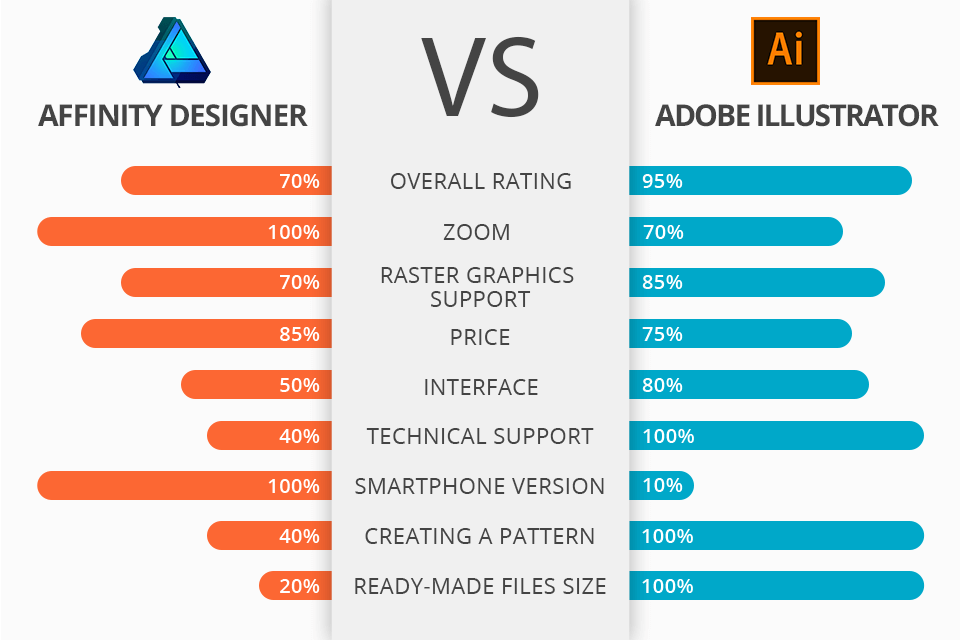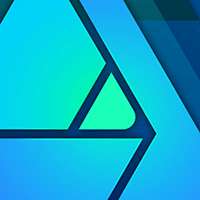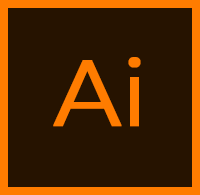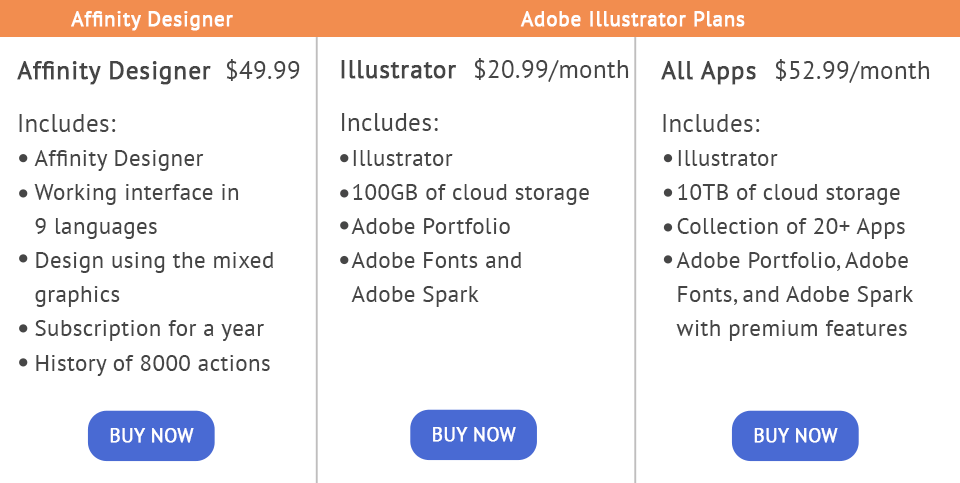Affinity Designer vs Illustrator programs can be used for different purposes.
Affinity Designer is a powerful graphic editor that works both with vector and raster graphics, therefore it is more universal.
Illustrator is a professional program for working with vector graphics. It has a huge set of tools, so many software developers try to imitate its features. Flexible vector graphics and high performance have made Affinity Designer a serious rival for similar Adobe products.
In this article, I will compare Affinity vs Illustrator, tell you about the advantages and disadvantages as well as the distinct features of these two powerful programs.
What Is Affinity Designer?
Affinity Designer is a professional vector graphics software that is compatible with Windows, Mac OS and iOS. This program is great for creating marketing materials, websites, badges and UI designs.
This software has an impressive set of tools and functions as well as three separate modes: Pixel, Vector and Export. Another convenient feature is the ability to save the project along with its history. Affinity Designer has an excellent zoom of up to 1,000,000% which you can use without losing image quality.
Affinity Designer: Strengths and Weaknesses
FREE distribution. It is possible to download Affinity Designer for free from their official website. You can test its functionality and decide whether you want to use it for working with vector graphics.
Color management. Many users find this feature very important. Affinity Designer works in RGB or LAB color spaces and supports up to 32 bits per channel. Besides, it supports Pantone colors which include CMYK and ICC color management profiles.
Advanced Grid features. Affinity Designer offers almost unlimited possibilities for using the grid. You can customize the intervals, cells, gaps, angles and more. Moreover, it is possible to use columns, page guides and isometric grids.
Available for all OS. What makes the fight between Affinity Designer vs Adobe Illustrator even more impressive is that the Serif product is compatible with all operating systems. Affinity is available for Windows, Mac OS and iOS. Thus, you can work with the same file on different devices.
Incredible zoom capabilities. When working with vector graphics, a good zoom is extremely important. Affinity allows you to increase the image up to 1,000,000% without compromising its quality.
The ability to work with raster graphics. In Affinity Designer, you can work with both vector and raster graphics, which considerably streamlines the work. It is possible to switch between vector and raster workspaces with a single click.
8000+ history steps. When working with Affinity Designer, don’t worry if you made any mistake. This program has 8000+ history steps, so you can undo a huge number of actions.
No tool for creating a pattern. Unlike Illustrator, it is impossible to create a pattern in Affinity Designer. Some designs require the use of architectural constructions to simplify the work due to ready-made abstractions.
Complex user interface. If compare Affinity Designer Adobe illustrator, we can see that the former has more complex design since it doesn't resemble any other program and has a steep learning curve. Affinity doesn’t have many tutorials, so you will need to learn this software by trial and error.
What Is Illustrator?
Adobe Illustrator is a vector graphics software developed and distributed by Adobe. The program runs on Windows and Mac OS. Moreover, it has a good set of drawing tools and the ability to adjust color and text.
This software is often used in the sphere of external advertising, printing, web design and publishing. Illustrator has a simple interface and excellent functionality. It allows you to easily edit the contours of images. Moreover, this vector graphic software has a high-quality zoom and gives accurate results while working with contours and lines.
Illustrator: Strengths and Weaknesses
Works together with Photoshop. While working with Illustrator, you can easily switch to Photoshop. This is a great advantage as Photoshop works with raster graphics. Thus, you can do any tasks concerning vector and raster graphics.
The source file is small. My Affinity Designer vs Illustrator comparison would be incomplete if I didn’t mention the size of the source file. Illustrator creates small files of 10-20MB which is very convenient if you want to share them. There is no need to spend a lot of time exporting files and sending them to other users.
Advanced plug-ins. Illustrator comes with numerous built-in plug-ins that can help you create web pages. Using these add-ons, you can easily transform a blank canvas into a brilliant web page. It is also possible to install any plug-in designed by third-party developers and professional designers.
Ability to create a vector image from a pixel. When working with a pixel-based image, you can easily create a vector one with the “Image Trace” tool. This is very convenient if you need to magnify the image without losing its clarity.
No limitless support for raster graphics. The Adobe product is an outsider in terms of raster graphics support. If you need to modify a bitmap image with the pixels arranged in a dot-matrix manner, Illustrator can turn this photo into a vector image, but some data will be lost.
Not suitable for all computers. Illustrator isn’t compatible with all operating systems. You can install this software only on Windows and Mac OS. Unlike Illustrator, Affinity Designer is compatible with iOS devices. Nevertheless, the Adobe developers also promise to release a version for Apple products.
Scaling options. Although an Illustrator developer claims that the Scale tool works well, it is considerably inferior to Affinity Designer’s scaling capabilities.
Affinity Designer vs Illustrator: Price
Illustrator is a professional graphics software officially distributed by Adobe. You don’t need to pre-pay an annual plan. Now, it is possible to purchase a monthly subscription using Creative Cloud. This is extremely handy if you aren’t sure that you need this software for permanent use.
Affinity Designer offers a single annual plan, but its price is affordable for users. This is a strong advantage for beginning designers and digital artists or for those who don't want to spend much on graphics software.
Affinity Designer vs Illustrator – Who Wins?
Affinity Designer is a great alternative to Illustrator, but this program is not suitable for all users. This is a great vector graphics software with an impressive set of tools. However, some novice users will find it difficult to figure out all its features as Affinity doesn't offer many tutorials.
If you are a professional designer, you will easily cope with its functions. Moreover, both Affinity Designer’s iPad and desktop versions will allow you to perform any task related to vector graphics.
If you are engaged in creating vector graphics professionally, using Illustrator will be a better choice. This software is suitable for creating web design and similar tasks. Also, I can't but mention the Pattern tool which will allow you to significantly simplify your workflow.
Therefore, in terms of reliability and powerful tools for professional work with vector graphics, Adobe product becomes a leader in Affinity Designer vs Illustrator rivalry. Nevertheless, Affinity Designer is also good software that will be a perfect fit for amateurs.
Freebies
If you want to facilitate your workflow and enhance your graphic designs but can't afford to purchase expensive effects, use these brushes.
Snow
When designing winter images or logos, you will always have to create a winter atmosphere. With this brush, it is possible to easily add snow and produce an extraordinary picture.
Fog
If your image includes mountain landscapes or locations near water, you can make it more mysterious with the help of fog. This brush will allow you to create a fog effect easily and fast.
Cloud
If you need to design a landscape image, you can make it more realistic by drawing clouds.
With this brush, you can easily draw clouds so that your picture will look natural and unobtrusive.



